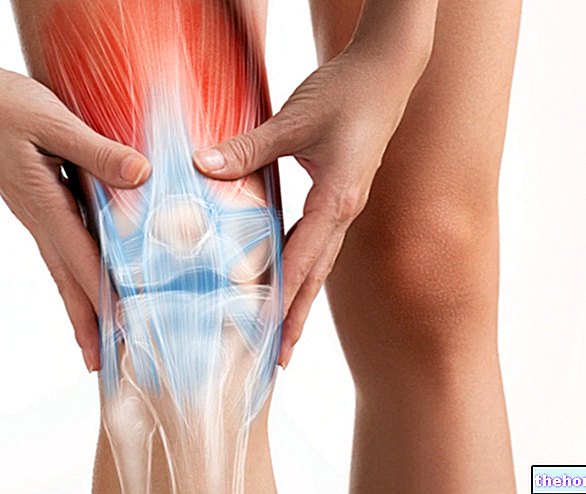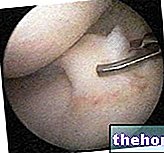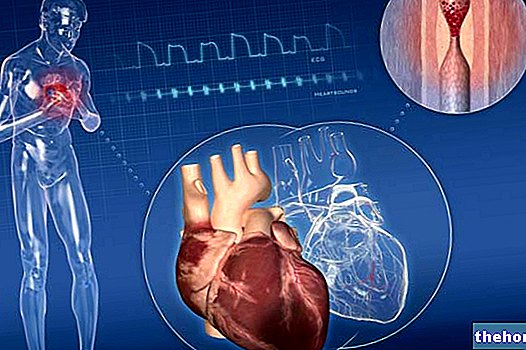Often, muscle tears occur in poor training conditions or when the muscle is particularly tired or unprepared to sustain the effort (failure to warm up).
Although the tear can affect any muscle in the body, the most frequently affected sites are the limbs, while more rarely pathologies affecting the abdominal and back muscles can be found. In particular, injuries to the thigh muscles (flexors, adductors, quadriceps) and leg (triceps sural) are frequent in athletes. A frequent muscular distraction in bodybuilders, on the other hand, is that involving the triceps and / or the deltoid during push exercises on a flat bench.
(less than 5%). The damage is all in all modest and is perceived as a slight discomfort that is accentuated during muscle contraction and stretching. In the case of a first degree injury there is therefore no significant loss of strength or limitation of movement.
Second Degree Injury or Severe Injury
The severity of the tear increases as more fibers are involved. The pain, which is acute, is similar to a twinge and is clearly felt following a violent muscle contraction. The injury interferes with the athletic gesture, but allows the athlete to continue the competition or training. However, the pain can be aggravated by any attempt to contract the muscle.
Third Degree Injury or Very Serious Injury
The high number of fibers involved causes a real laceration of the muscle belly (complete or semi-complete, in any case involving at least 3/4 of the fibers). This lesion is felt on palpation as a depression, a real step that testifies to the " extent of the break.
The pain, which is very violent, determines a complete functional impotence so that, if the injury involves the lower limbs, the athlete immediately collapses to the ground

Muscle tearing can be compared to the progressive breaking of a rope put under tension by two tie rods. At first, only some fibers are unraveled (1st degree injury) and as the traction force increases, the fraying becomes more and more evident (2nd degree) until the complete rupture of the rope (3rd degree).
Muscle Strain: What Symptoms Does It Involve?
The subject affected by a muscle tear feels a sharp pain in the injured area, the more intense the greater the number of fibers involved. The pain felt is often evoked by the contraction of the affected muscle. If the trauma is particularly severe, the subject is unable to move the affected part and the muscle appears rigid and contracted. A second or third degree distraction is accompanied, in most cases, by edema and swelling.
The skeletal muscle is supplied with a dense network of capillaries, which, in the event of a tear, are injured. This rupture causes a more or less evident blood extravasation depending on the extent and location of the lesion. If in the mildest traumas the blood remains inside the muscle, in the most severe ones it migrates to the surface where it accumulates and forms evident hematomas.
After about 24 hours, a bruise located lower than the site of the tear can be appreciated as evidence of blood extravasation. A "defense" muscle contracture may also arise, thanks to which the body tries to immobilize the affected area to facilitate recovery and prevent the situation from worsening further.
and continue. In this way, however, the risk of aggravating the situation considerably increases, so it is advisable to stop as soon as possible, even if the pain felt is mild.
After stopping, it is a good idea to:
- Avoid loading the affected limb;
- Put the affected limb in a resting position (raised position);
- Immediately apply a cold pack (ice pack, spray, etc.) to the affected area in order to reduce blood flow to the injured vessels (vasoconstriction);
- Avoid any form of heat (massages, ointments, muds, etc.);
- Contact a specialized doctor and undergo instrumental tests to assess the real extent of the damage.
First degree lesions resolve within 1-2 weeks, a period of time in which the patient (athlete) must remain at rest and undergo drug treatment based on anti-inflammatory and muscle relaxants. A few stretching exercises can help speed up and improve recovery by re-elasticizing scar repair tissue as much as possible.
Second degree injuries, on the other hand, have longer healing times (15-30 days). Before resuming sporting activity, the subject must follow a rehabilitation course and undergo appropriate physiotherapy interventions.
In severe cases (grade III injuries), surgery may be required.
Among the most effective physical therapies, tecar therapy is worth mentioning; it is a still not very widespread method, which, according to some studies, would allow to halve the recovery times thanks to the transfer of endogenous electrical charges to the deeper muscle layers.
See also: Drugs for the treatment of muscle tears
. If we exclude the still unclear intervention of the satellite cells, the repair process takes place exclusively with the formation of scar tissue that is less elastic, less contractile and also less resistant than muscle.
In this way, areas with different elasticity can form which significantly increase the risk of recurrent injuries.
It therefore becomes of fundamental importance to try to remove the risk of injury as much as possible.
The prevention of muscle tears is characterized by the observance of some fundamental points:
- Always perform a general and specific warm-up of the muscles
- Make sure you are in the right physical condition to withstand the effort
- Carefully evaluate the practicability of the pitch
- Choose suitable clothing, cover up well in the winter months and, if necessary, use specific ointments during the heating phase
- Always perform stretching exercises to improve muscle elasticity and flexibility both in the preparatory and in the relaxing phase
Finally, it is advisable not to underestimate any painful symptom, even if mild; the prevention of the most serious muscle strains is also carried out through a correct therapy of the mildest forms.
Read also: Muscle Strain Remedies






















-nelle-carni-di-maiale.jpg)




